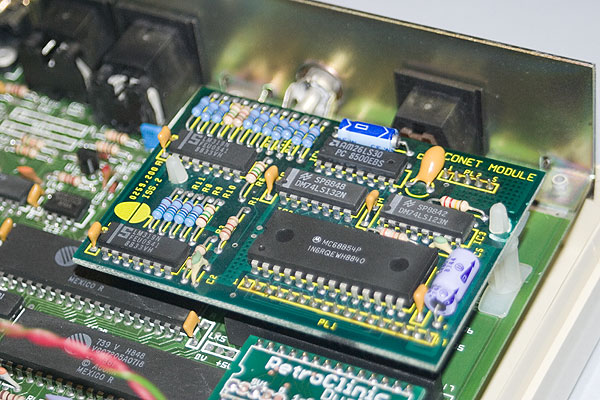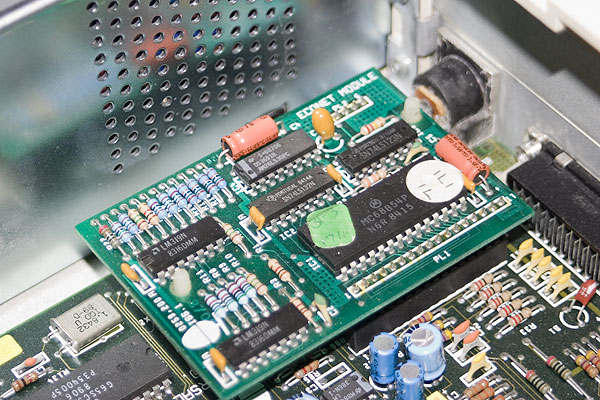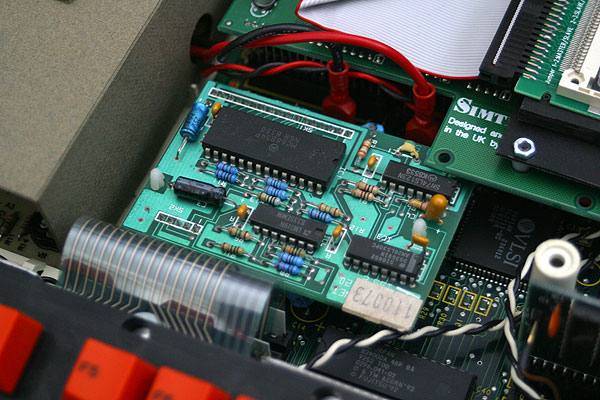Acorn Econet Modules
In later Acorn computers, the Econet interface was modularised meaning that they included a standardised set of headers on the motherboard and the Econet socket was included but the active Econet circuitry was carried on an optional daughterboard.
Some early modules were developed without collision detection circuitry whilst later modules had full collision detection thereby increasing the speed and reliability of communication over the network.
The Acorn BBC Master series of computers was the first set of Acorn computers to implement this modular approach to the fitting of the Econet interface and an example of a later Econet module can be seen fitted here to my BBC Master 128.

After the Acorn Master, in 1987, the Archimedes A3x0 and A4x0 series of machines also carried the modular headers for the fitting of an Econet interface and one can be seen fitted to my Archimedes A410/1 in the photo below.

In 1989, the release of the A3000 and A400/1 series continued the trend of using the modular Econet interface and you can see below an earlier model of the Econet interface without the collision detection hardware fitted to my A3000. I fitted the oldest module to my newest Archimedes because this particular Archimedes is significantly faster than any other Acorn machine I own. The reasoning being that it is more capable of resolving collisions without the extra hardware than the other machines are as they're far less powerful. In January 2012, I acquired several more Econet modules and so replaced the module in the A3000 with one that supports collision detection. The older module is now held as a spare.
